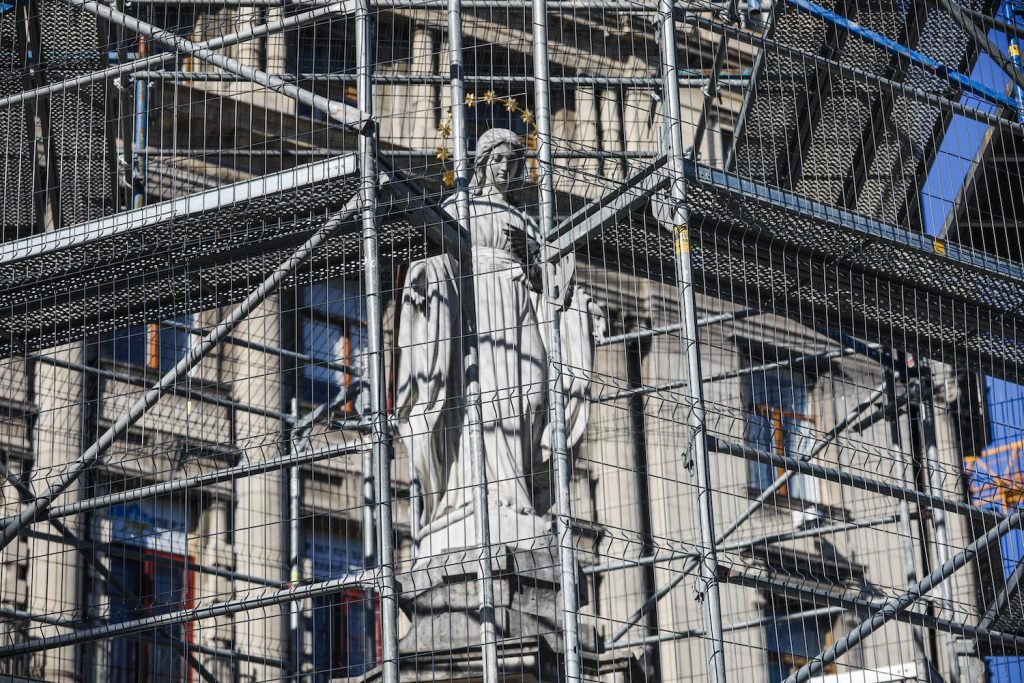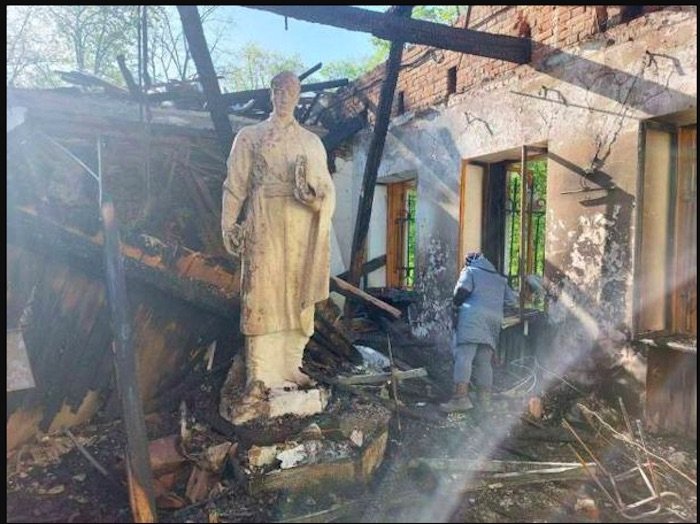As Russians ‘Pillage’ Ukraine’s Museums in Annexed Territories, Artifacts Are Turning Up in Moscow and on the Black Market

Written by Eileen Kinsella. Originally published by artnet, October 3, 2022 .
Museum employees in Ukraine have put up a fierce fight—sometimes risking their lives—to resist the looting and destruction of cultural property in the wake of the Russian invasion.
The situation has grown more dire in recent days as Russian president Vladimir Putin has announced plans to annex more parts of Ukraine. Kremlin representative Dmitry Peskov said that four regions of Ukraine—including Luhansk, Donetsk, Kherson, and Zaporizhzhia—would be folded into Russia. That includes museums in the respective regions, meaning that cultural property in those institutions would come under Russian control.
The areas are home to millions of Ukrainians and thousands of artworks and artifacts. Since the beginning of the war there have been reports of widespread looting by the Russian military of valuable artworks and historic gold collections in cities including Mariupol and Melitopol. In a number of cases, it was unclear whether missing objects and collections had been successfully hidden away for safekeeping or were destroyed or stolen.
As of September, UNESCO has verified damage to 196 sites since February 24 (up from 161 sites in mid July)—including 82 religious sites, 13 museums, 37 historic buildings, 36 buildings dedicated to cultural activities, 18 monuments, and 10 libraries.
In the early days of the invasion, Kyiv-based museum veteran Milena Chorna banded together with several colleagues to form the Ukraine Museum Crisis Center. “We decided to join our efforts to help all our colleagues who need more assistance than we did in Kyiv,” she told Artnet News at the time. It has grown from four staffers to 25, according to its website.
“No annexation can stop Ukrainians from struggling for their independence and fighting back in order to liberate the land of their ancestors,” Chorna told Artnet News following news of Putin’s latest move.
“Things have changed so rapidly,” said Peter Doroshenko, the newly appointed director of New York’s Ukrainian Museum, which has launched an assistance program called SAFE. “We’re just in the thick of things, getting them computers so that they can start transferring files on what they have in the collection, and their financial situation. We pay for their cloud services if they need that. That way, if the museum does take a missile, at least the information is safe.”
Museums in Crimea and annexed parts of the Luhansk and Donetsk regions have already experienced theft, including looting at the prestigious Gorlovka Museum. One dealer in Gorlovka who specializes in antiquities told Chorna that he stashed his inventory in another friend’s garage, but within two days, an unidentified squad showed up and took everything.

Museum employees in Ukraine have put up a fierce fight—sometimes risking their lives—to resist the looting and destruction of cultural property in the wake of the Russian invasion.
The situation has grown more dire in recent days as Russian president Vladimir Putin has announced plans to annex more parts of Ukraine. Kremlin representative Dmitry Peskov said that four regions of Ukraine—including Luhansk, Donetsk, Kherson, and Zaporizhzhia—would be folded into Russia. That includes museums in the respective regions, meaning that cultural property in those institutions would come under Russian control.
The areas are home to millions of Ukrainians and thousands of artworks and artifacts. Since the beginning of the war there have been reports of widespread looting by the Russian military of valuable artworks and historic gold collections in cities including Mariupol and Melitopol. In a number of cases, it was unclear whether missing objects and collections had been successfully hidden away for safekeeping or were destroyed or stolen.
As of September, UNESCO has verified damage to 196 sites since February 24 (up from 161 sites in mid July)—including 82 religious sites, 13 museums, 37 historic buildings, 36 buildings dedicated to cultural activities, 18 monuments, and 10 libraries.
In the early days of the invasion, Kyiv-based museum veteran Milena Chorna banded together with several colleagues to form the Ukraine Museum Crisis Center. “We decided to join our efforts to help all our colleagues who need more assistance than we did in Kyiv,” she told Artnet News at the time. It has grown from four staffers to 25, according to its website.
“No annexation can stop Ukrainians from struggling for their independence and fighting back in order to liberate the land of their ancestors,” Chorna told Artnet News following news of Putin’s latest move.
“Things have changed so rapidly,” said Peter Doroshenko, the newly appointed director of New York’s Ukrainian Museum, which has launched an assistance program called SAFE. “We’re just in the thick of things, getting them computers so that they can start transferring files on what they have in the collection, and their financial situation. We pay for their cloud services if they need that. That way, if the museum does take a missile, at least the information is safe.”
Museums in Crimea and annexed parts of the Luhansk and Donetsk regions have already experienced theft, including looting at the prestigious Gorlovka Museum. One dealer in Gorlovka who specializes in antiquities told Chorna that he stashed his inventory in another friend’s garage, but within two days, an unidentified squad showed up and took everything.